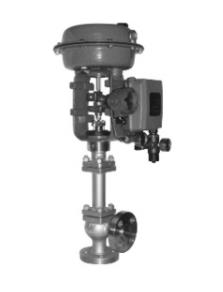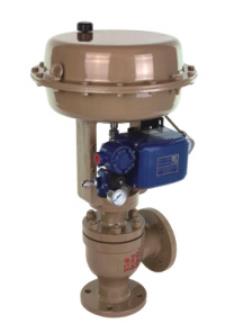Valve parts structure
Valve parts structure
What are the parts structure of the valve? The valve consists of valve body, valve cover, valve trim, valve disc, valve seat and other valve parts structure. We are an industrial valve supplier from China. We provide a complete sales system. Our valve customization service includes valve production. with design. If you need to buy a valve, please contact us!
-
Globe Pneumatic Control Valve
Bellows Control Valve
-
Control valves
Venturi Angle Valves
-
Control valves
Cage Type Angle Valve
-
Control valves
General Angle Valve
-
Globe Pneumatic Control Valve
High pressure low noise cage control valve
-
Globe Pneumatic Control Valve
High Pressure Cage Control Valve
-
Globe Pneumatic Control Valve
High Pressure Single Seat Control Valve
-
Globe Pneumatic Control Valve
Large diameter sleeve control valve
why choose newinteg valve !
Our wish is to get you here without having to look for anyone else!


Full range of valve types
We have hundreds of industrial valves for you to choose from!

Novel valve type
Every year research and development of novel valves are put into production!

Customized valve types
Fully customized valve according to customer needs!
Parts structure of the valve
The valve is a mechanical device that controls the flow and pressure in a system or process, which is why it is a fundamental element for piping systems that transport liquids, gases, steam, sludge, etc. Various types of valves are available, including: gate valve, ball valve, ball valve, butterfly valve, check valve, diaphragm valve, pinch valve, pressure reducer valve, control valve, and many more. In addition, for each of these types, different models with different characteristics and capabilities are available.
The valves can be operated automatically, manually, by pneumatic or hydraulic actuators. The main functions performed by a valve are: stop, start, reduce, increase, regulate the flow, control the flow direction or process pressure, release a certain pressure in a piping system. Regardless of type, all valves have the following basic components: body, bonnet, trim (internal
components), actuator and gasket.
BODY
The valve body is also called a casing and holds all parts together, receiving inlet and outlet pipes via threaded, bolted or welded joints.
The valve body is the first pressure limit of the valve and duqnue withstands the fluid pressure load of the connecting pipe.
The valve bodies are cast or forged into various shapes and each component has a specific function and is built with materials suitable for that function.
COVER
It is also called a cap and is the second most important boundary of the pressure valve, also available in many designs and styles.
The bonnet is manufactured from the same material as the valve body and is usually fixed to the body by threaded, bolted or welded joints.
During the manufacturing of the valve, the internal parts (such as stem, disc, etc.) are inserted into the valve body and, immediately after, the cap is fixed to hold the various elements together.
The connection of the hood to the body is considered pressure limit and, therefore, the welded joints or bolts that connect the bonnet to the valve body are the pressure sealing parts.
TRIM
The internal parts of the valve that are removable and replaceable in contact with the moving fluid are called trims, a series of components including: valve seats, discs, cable glands, gaskets, guides, bushings and internal springs. However, the valve body, bonnet, and packing, which are in contact with the fluid, are not included in the trim.
The basic movement of the valve and the control of the flow are possible thanks to the trim. The components of the valve trim are designed and built with a very wide variety of materials, since according to the material it is possible to offer different strength and strength properties, which therefore depend on the characteristics of the fluid, the chemical composition, pressure, temperature, flow rate, speed and viscosity.
The liner material can be created with the same material as the valve body or valve cover, or with a different material depending on the needs of use.
DISC
This element accelerates or stops the flow, through its position, and is the third most important main pressure limit. With the valve closed all system pressure is exerted on the disc, therefore, the disc is a pressure dependent component which is generally made with a hard surface to provide good wear resistance. Most tubes get their name from the design of their discs.
VALVE SEAT
The valve seat, also known as the seal ring, provides a bearing surface for the disc and the same valve can have one or more seats.
In the case of a ball or swing check valve, there is usually a seat that forms a seal with the disc to prevent flow. In the case of a penstock there are two seats: one upstream and one downstream.
To improve the wear resistance of the seal ring, the surface is usually hardened by welding and then machining the contact surface of the seal ring.
The seal ring is not considered a pressure limiting component because the body has a wall thickness sufficient to withstand the pressure.
More Valve related articles
I believe you will not regret your choice
Why choose XinHui valve?
Customized on demand
We very much welcome customers to bring your requirements in the industry, our industrial valve solutions include customized on demand! Use the best materials to produce standard compliant valves, If you need valve customization services, please contact us immediately
Valve quality
Xinhui valve strictly controls the quality of the products in each process; on the other hand, it improves the work quality of the employees; and constantly pursues the high performance and high quality of the products, and is committed to becoming the preferred brand of valve products for the majority of users. .
Professional Services
Our salesman will answer your professional industry questions, product questions, transportation questions, etc. Our service personnel are online 7*12 hours. If you encounter time difference problems, please wait patiently for our reply, and we will reply you as soon as possible The problem.
High and new technology
As a high-tech enterprise in China, we can provide complete valve sample drawings, technical support for valve production process, technical support such as maintenance manuals, and strength calculation books. Frequently Asked Questions about Valve Operation.
R&D innovation
Xinhui Valve has invested a lot of manpower and funds in the innovative research and development of valves, and opened laboratories, inspection rooms, and R&D rooms. 20 kinds of new products are developed every year. Customized industry-specific valves for customers, dozens of products under severe valve conditions.
International Standard
The valves we produce meet various international testing indicators, and all kinds of valves are manufactured and accepted according to relevant domestic standards such as GB and JB, as well as international standards such as ANSI, API, JIS, and BS. DIN. Please contact us for special production standards.
We are not only a manufacturer of valves, but also a disseminator of industry knowledge
OEM & ODM XinHui valve Applications





FAQ
3. Packing gland: prevent fluid from escaping and ensure a seal between the valve cover and the valve stem. After the soft seal added in the stuffing box has been squeezed by the stuffing box, it is pressed firmly onto the valve stem and packing box wall to achieve a reliable seal.
INTERNAL COMPONENTS OF THE VALVE
valve trim
The detachable and replaceable valve internal parts in contact with the flowing medium are collectively referred to as valve trims. These components include valve seats, discs, glands, gaskets, guides, bushings and internal springs. The valve body, bonnet, packing, etc. are also in contact with the flowing medium and are not considered trim.








